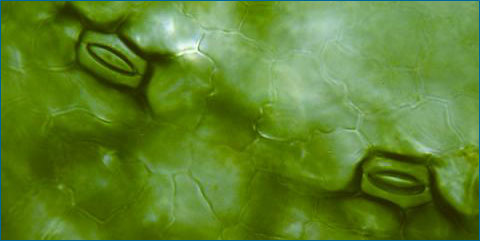The keys to Jennifer’s research are microscopic pores on the surfaces of leaves called stomata (singular: stoma) which plants use to “breathe.” Plants need carbon dioxide, just as we need oxygen, and stomata allow the plant to take in carbon dioxide to perform photosynthesis. In the process of photosynthesis, the plant will chemically convert that gas into sugar, which the plant can use to fuel cellular processes, grow, and reproduce.

Stomata, which means “mouths” in Greek, do indeed resemble tiny mouths surrounded by swollen lips. The “lips” are actually individual cells (called guard cells) that can swell up to open the stomata or deflate to close them off. But why would a plant want to close off its stomata, effectively cutting it off from essential carbon dioxide? Well, plants also need water, and any time that a stoma is open, the plant loses water (along with oxygen, one of the waste products of photosynthesis). By closing the stoma when the plant has enough carbon dioxide, the plant can preserve its water and prevent itself from drying out.
Get tips for using research profiles, like this one, with your students.

